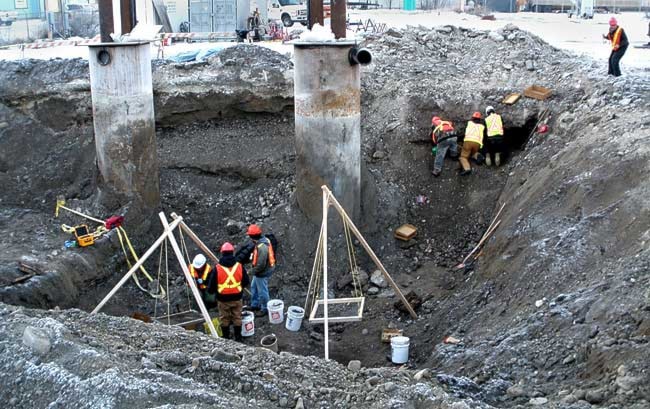Two Klondike killers will be reburied in Dawson City this summer.
The men were accidently unearthed in November, during work to build a new sewage treatment plant. The bodies were eventually identified as Jim and Dawson Nantuck, the only First Nation men known to be hanged by the Mounties during the Klondike Gold Rush.
Both hanged on August 4, 1899, for shooting two prospectors at the mouth of the M’Clintock River.
Their motive remains murky, but it’s believed they committed the crime to avenge the deaths of an old man and a young boy who died from arsenic poisoning.
Last month, elders from the Carcross/Tagish First Nations decided that the Nantucks should receive a simple burial in Dawson City. It’s likely to happen in June.
Elders also requested that there be no DNA tests on the men, said Susan Mooney, the First Nations’ heritage manager.
“It’s not a traditional belief and value,” she said.
DNA testing may have helped identify the Nantuck’s living relatives. It also would have cleared up whether they were full brothers, half-brothers or cousins: under the traditional clan system, little distinction was made between these relationships, said Mooney.
Two other Nantuck brothers likely remain in the ground. Joe and Frank didn’t live long enough to be hanged. They succumbed to tuberculosis six months earlier.
The Nantucks hardly looked like hardened killers - the youngest was thought to be 15. And it appears as if they were executing justice as they understood it when they shot the prospectors.
Their traditional laws called for “an eye for an eye,” said Mooney. Mounties, meanwhile, had only recently begun to enforce their own idea of justice.
“You’ve got four young guys who were doing right by their clan. They didn’t know the new rules.”
The Nantucks were unearthed along with a third body, believed to be Edward Henderson, a curmudgeonly American who hanged the same day, for shooting a companion at Marsh Lake.
Henderson was cursed with a painful bladder problem that required him to frequently urinate. He used a tin can for this purpose in his tent.
One night, the can spilled on his companion’s blanket. The ensuing argument ended with Henderson shooting the man dead.
Ken Coates, a University of Waterloo historian who wrote Strange Things Done: Murder in Yukon History, sees the three hangings as a strong message sent by the Canadian government of the day that its rules extended to everyone in the Klondike.
It’s possible that more bodies will be unearthed soon, when excavating begins on Fifth Avenue to hook the new sewage plant to the city’s pipes. The street remains on the edge of the Mountie barracks property, where convicts were buried.
“We aren’t anticipating there’s any graves over there,” said Yukon senior archeologist Greg Hare. Then again, they didn’t expect to find graves in November, either.
The territory has hired a mining exploration company to use ground-penetrating radar, which may be able to detect underground graves.
“The operators of the equipment are not optimistic, given how deeply buried they are and how old the graves are,” said Hare. “But we’ll give it a try.”
Contact John Thompson at
johnt@yukon-news.com.
